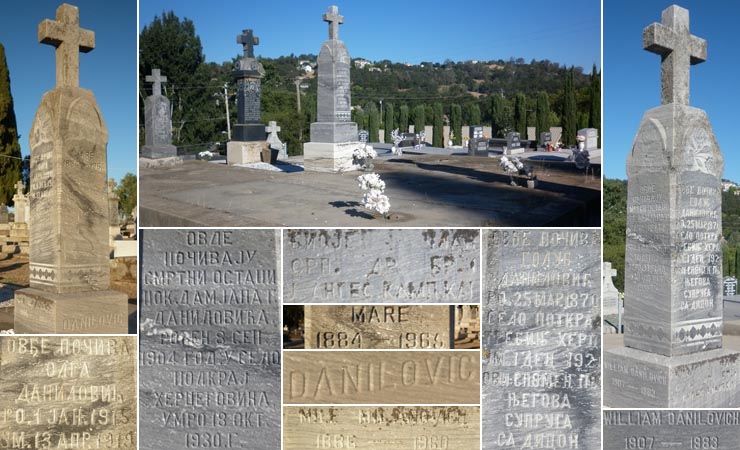Danilovich Golub 1870 - 1921, Damjan 1904 - 1930, William 1907 - 1983, Olga 1915 - 1919, Mare 1884 - 1965,
Miladinovich Mile 1884 - 1960
ОВЂЕ ПОЧИВА
ГОЛУБ
ДАНИЛОВИЋ
РО. 25 МАР. 1870
СЕЛО ПОТКРАЈ
ТРЕБИЊ ХЕРЦ
УМ. 1 ДЕЦ 1921
ОВИ СПОМЕНИК ПО
ЊЕГОВА
СУПРУГА
СА ДИЦОМ
БИОЈЕ ЧЛАН
СРП. ДР. БР. 1
У АНГЕС. КАМП. КА. I
ОВДЕ
ПОЧИВАЈУ
СМРТНИ ОСТАЦИ
ПОК. ДАМЈАНА Г.
ДАНИЛОВИЧА
РОЂЕН 8. СЕП
1904 ГОД. У СЕЛО
ПОДКРАЈ
ХЕРЦЕГОВИНА
УМРО 18 ОКТ
1930. Г.
WILLIAM DANILOVICH
1907 - 1983
ОВЂЕ ПОЧИВА
ОЛГА
ДАНИЛОВИЋ
РО. 1 ЈАН. 1915
УМ. 13 АПР. 1919
MILE MILADINOVICH
1886 - 1960
MARE DANILOVICH
1884 - 1965





